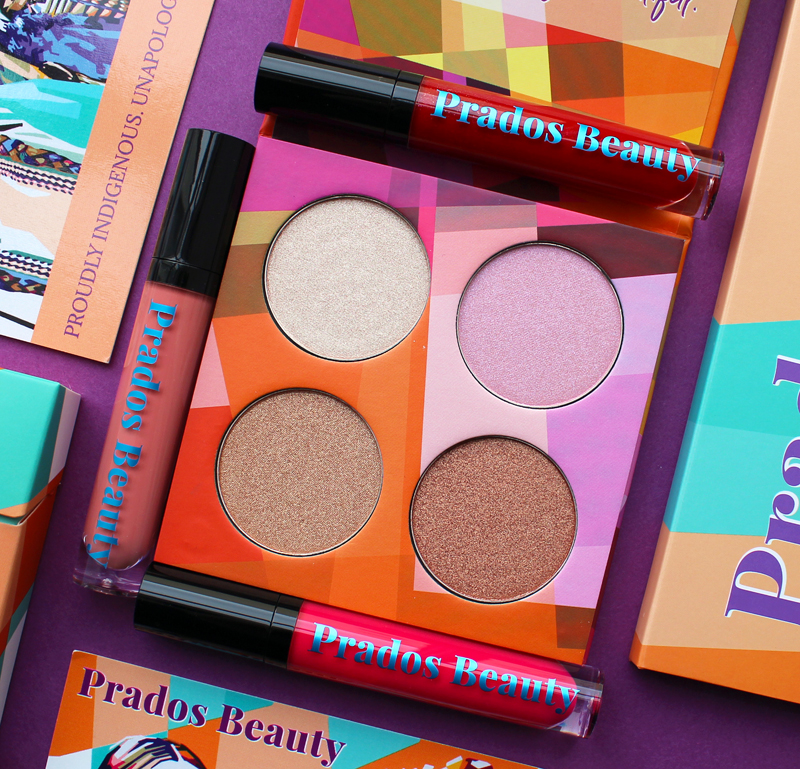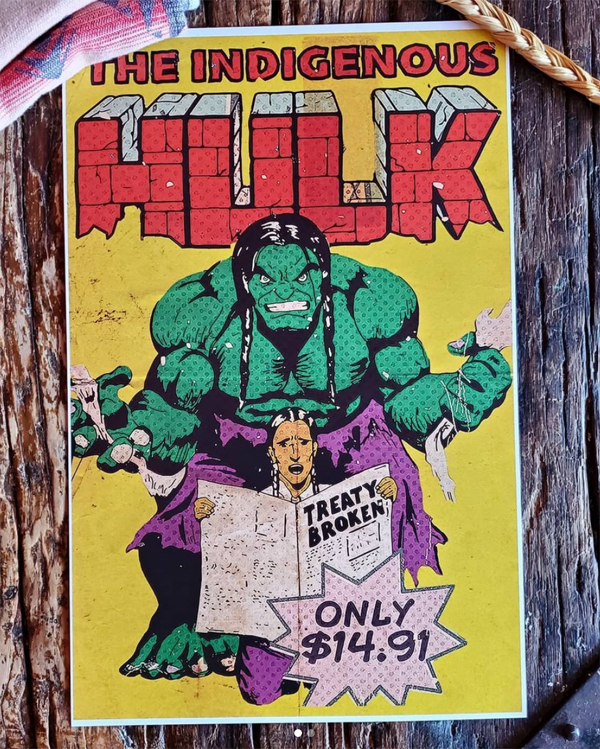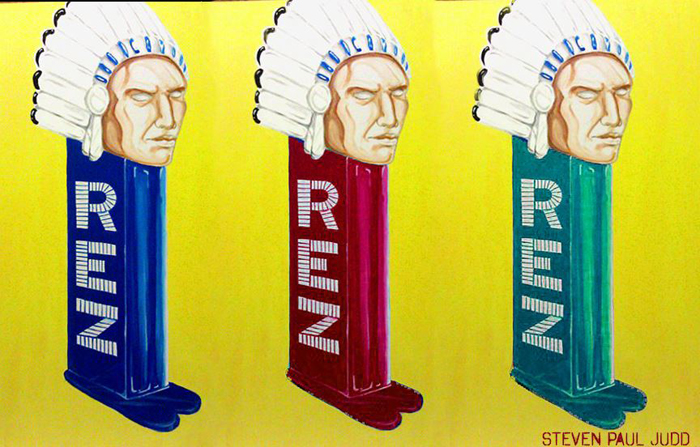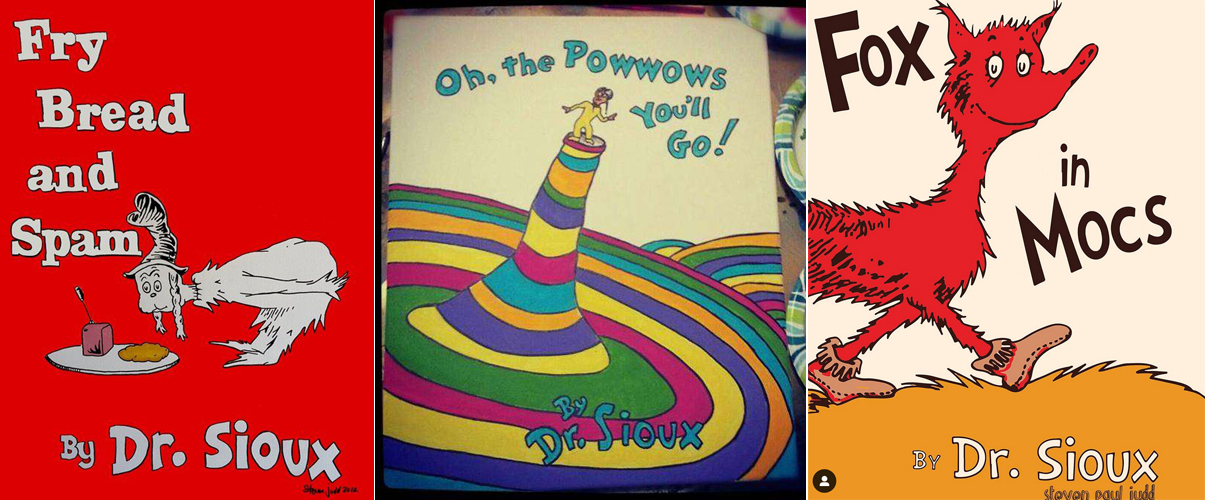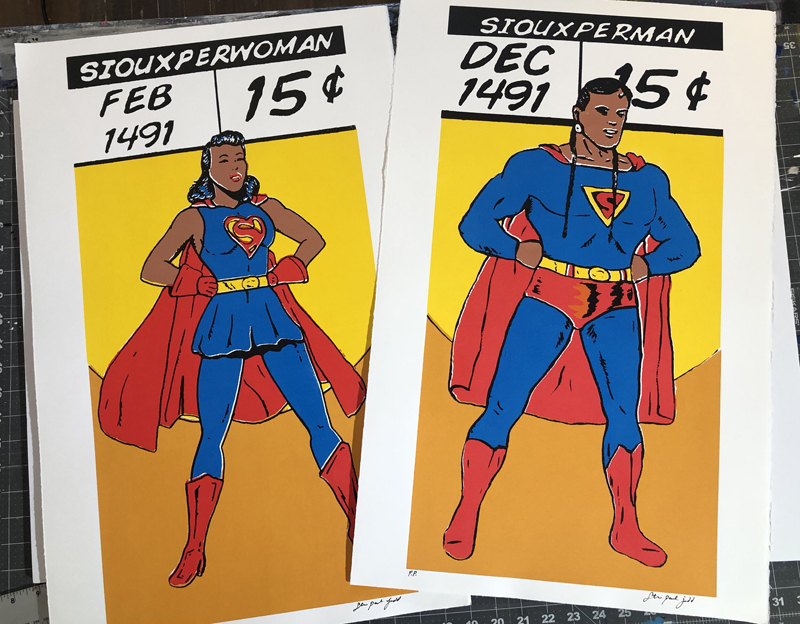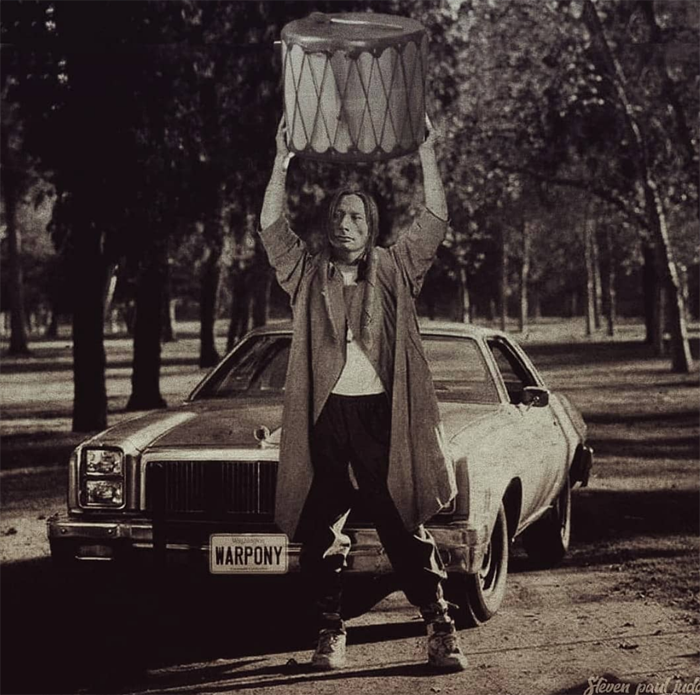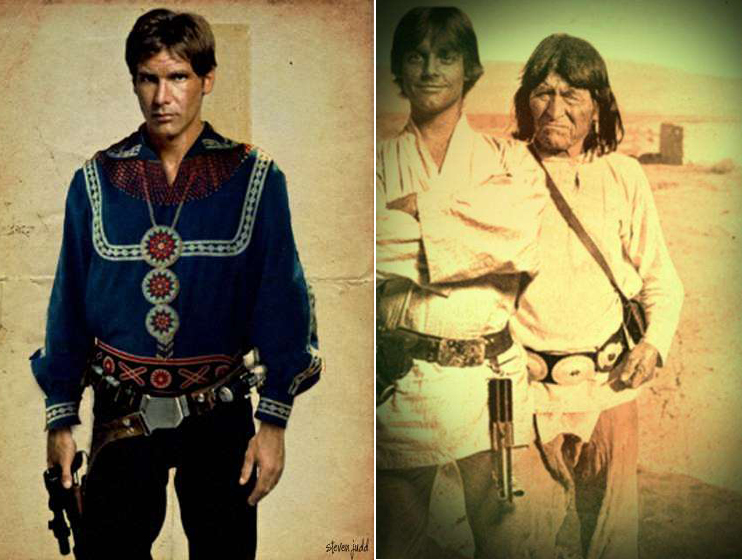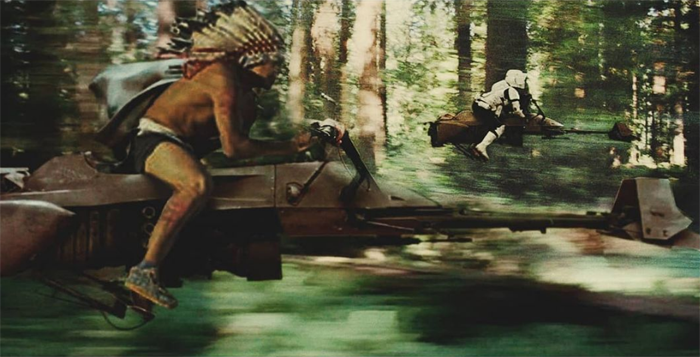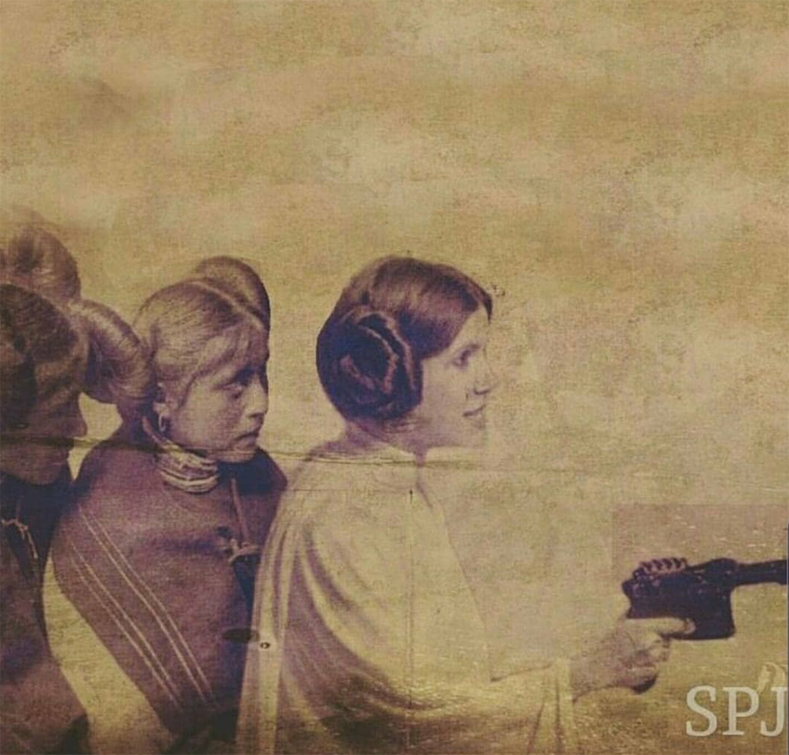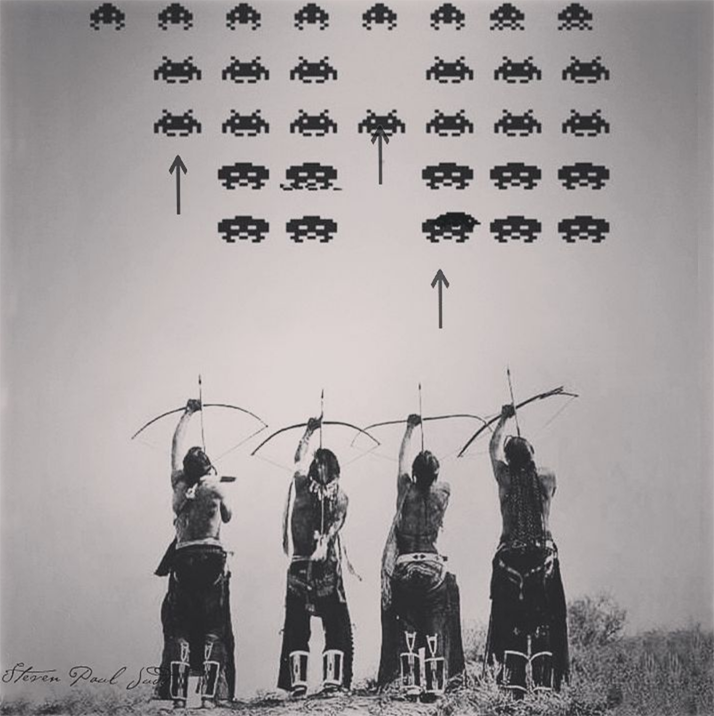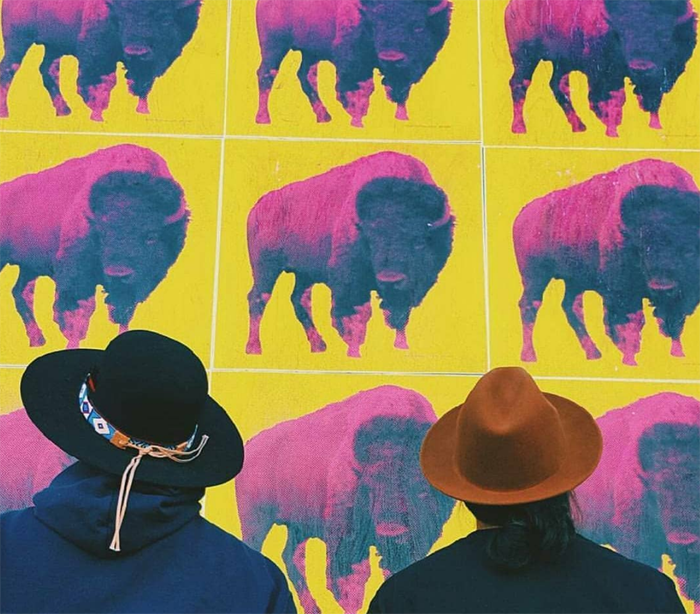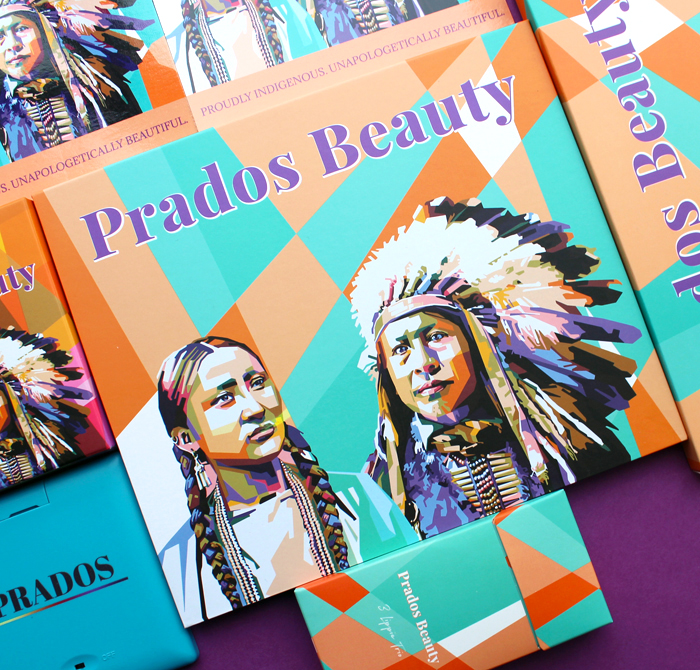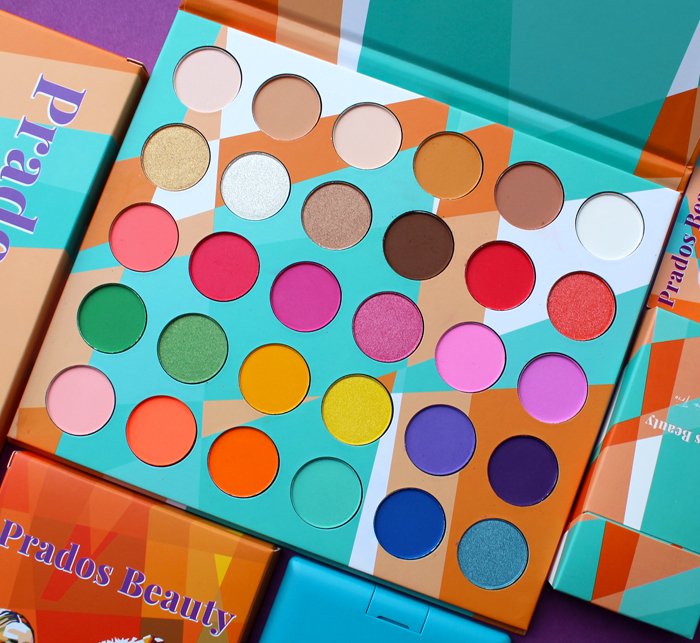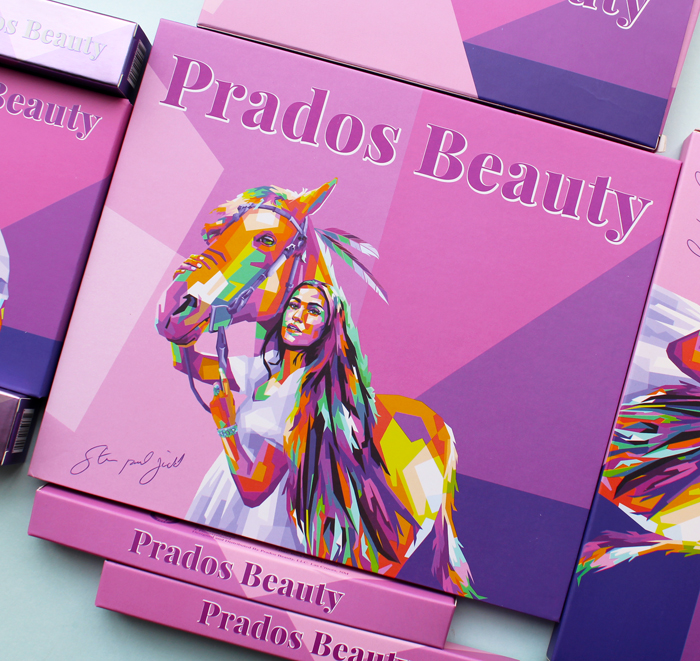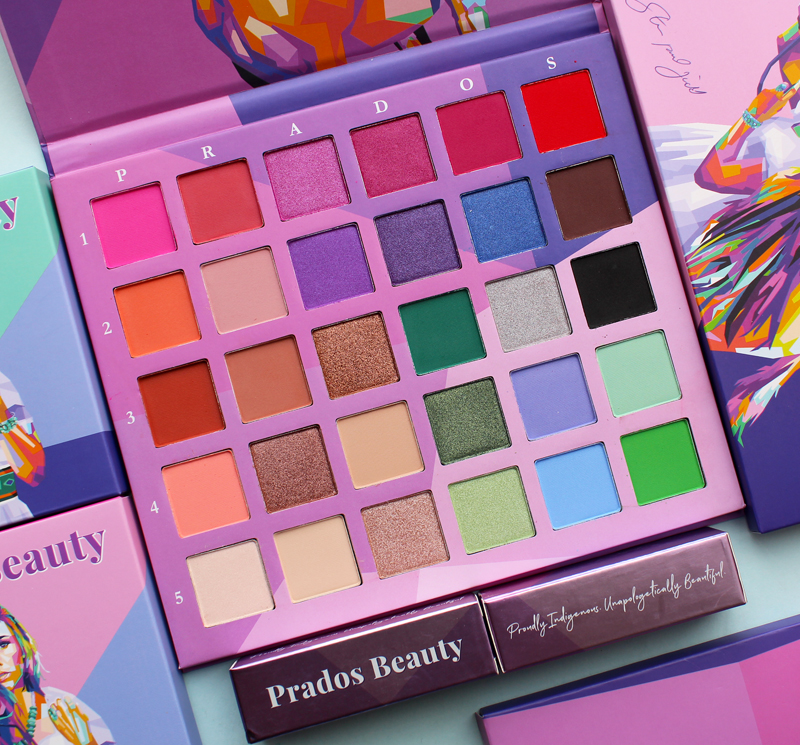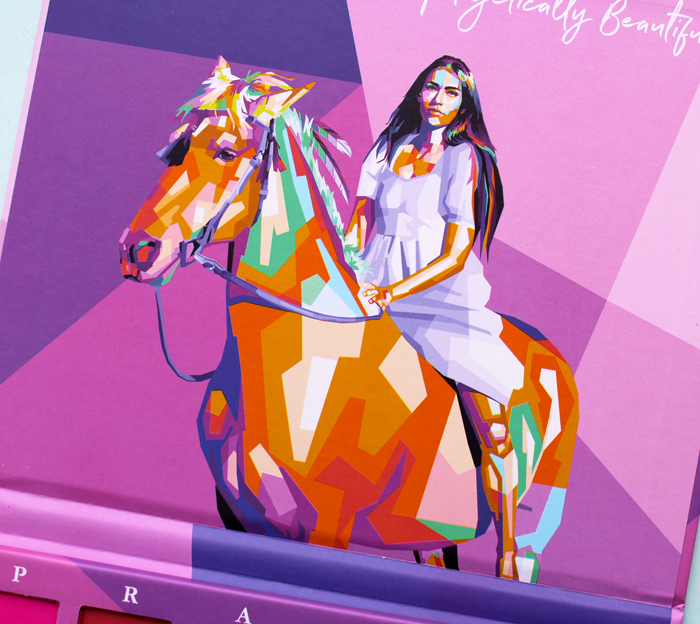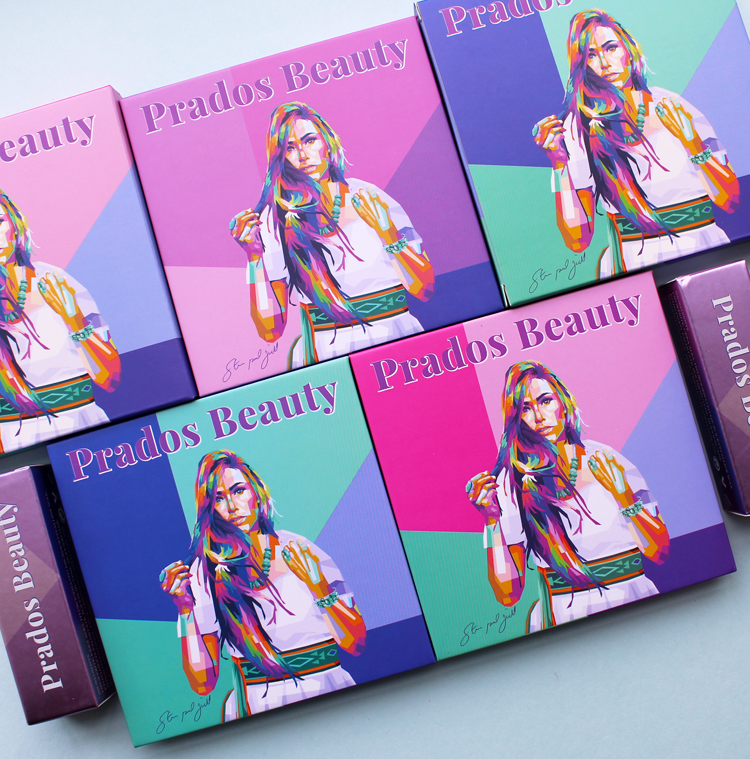Today the Museum celebrates Indigenous People’s Day with several beautiful collections from newcomer Prados Beauty. While I would like to examine the traditional cosmetic practices of Native Americans and other Indigenous people around the world1, I’m still debating whether that would do more harm than good, so I thought highlighting a new brand was the way to go.
Prados Beauty was established in 2018 by makeup artist and entrepreneur Cece Meadows, whose background inspired her to create the line. The oldest of four children, Meadows was raised in a small farm town in Arizona. “We didn’t have a lot, but we had each other. School was my safe haven, so I thrived there and ended up being the first in my family to graduate from college,” she says. Meadows excelled at a career in finance in her early ’20s, but suffered a cancer diagnosis at 27. The U.S. healthcare system being what is, insurance only covered a small portion of necessary care, and Meadows found herself broke and homeless shortly after going into remission. But her passion for makeup and drive to create a space for Indigenous people within the beauty sphere led to a cross-country move to cosmetology school in New York City. In 2018 Meadows became the first Native American makeup artist to head a show backstage for New York Fashion Week. She established Prados Beauty the same year and began selling the products online in 2019. “I grew up in a negative environment, but there was always a spark in me that wanted something better. As an adult, that has helped me get myself out of places when I’ve been stuck. I’ve always dreamed of owning my own cosmetics line. My passions are doing makeup and doing philanthropic work, so I figured out a way to make those two things go together.”
Meadows, who identifies as half Chicana, half Native American (Yaqui and Comanche), explains that the lack of representation in the beauty industry was a key factor in starting her own brand. “Growing up as a Xicana and Indigenous girl, I never saw representation of my people in an accurate light,” she says. “When I became a professional makeup artist and would show up in some of my traditional regalia to NYFW or professional photoshoot, I was shocked at the lack of education and awareness from models and designers of Indigenous people…It wasn’t until I was 30 years old that I saw an Indigenous woman in the public spotlight without being oversexualized. It was in 2015 when a First Nations Cree woman, Ashley Callingbull, was crowned Miss Universe in 2015. It was an emotional, yet exciting moment for me. I remember watching the crowning while holding my young son and thinking, ‘we not only have been robbed of our lands, our culture, our beauty, our stories and our people but now we have to compete for a crown that we have always worn.'”
For Meadows, starting her own beauty brand was a way to reclaim Native culture and make it visible within the industry. “I have watched companies and clothing brands appropriate our culture and designs for years and I wanted to take that back. I wanted to create a brand that was 100% inclusive, but highlighted the beauty and story of who we are today. Our brand is about being really proud of who we are and telling our story through makeup. In public schools, you, unfortunately, aren’t really taught the truth about the events that truly unfolded in the United States against Native Peoples. So when my people don’t see ourselves in the mainstream, we make our own way. We support our own, we hype up our own, we become this secret society of creativity and artistic talent that the world fails to see. But we see, we know, and the acknowledgment of our own becomes enough. Because I mean what else are we going to do? Disappear? Never. Our generation has become a fierce generation, filled with hunger and audacity to believe and know that we are worthy of conquering spaces we have been told for hundreds of years we didn’t belong in. This is why I created Prados.”
Accessibility and education of non-Native people were also priorities for Meadows. Individual products are priced around $40 and under. “It is always important for me to have affordable price points. One thing I remember growing up as a kid was not being able to afford things that I felt I needed to have as a budding makeup artist,” she says. Additionally, being an inclusive brand with an outward focus on Native American pride encourages customers to learn about Native people’s heritage, or at least be more mindful of it. Says Meadows, “Every time we gain a new follower, I get excited because it’s one more person who learns about our beautiful culture and our stories. [Prados] has inspired consumers to learn about Indigenous culture. They know that we’re not just a false Pocahontas story, and we can remind people that we’re more than a genocide in a history book. We’re still here.”
Meadows’ goals are identical to those of Steven Paul Judd, the Kiowa-Choctaw artist responsible for the designs on several Prados Beauty collections. Like Meadows, Judd noticed a dearth of authentic Native American figures across all areas of pop culture and understood the necessity in carving out a space for Native representation through art. “[I] make things that I want to see. So I like cool pop stuff, right? And I like movies and music, and I’m also Native American. I grew up on a reservation when I was a kid, went to an all-Native college. I like my Native stuff, obviously, but I still like things that other people like. I live in the same world that other people live in, and I just found that there wasn’t what I felt was cool, pop culture stuff made for me—stickers, toys, action figures—I didn’t feel like they were necessarily speaking to things that I saw or that my family saw, so I decided to do my best to try to make my own…Imagine growing up and in every movie, television show and ad featuring people who looked like you and your family, they were only shown in historical context. It would be like white people were only portrayed as Pilgrims. [The] only Native Americans I was able to see on TV were Iron Eyes Cody—he did those trash commercials, and he wasn’t even Native, he was Italian—and Ponch on Chips, but he wasn’t Native American, and we had Tonto, Jay Silverheels, on old reruns, but besides historical Westerns, I didn’t see any Natives anywhere in popular culture at all.”
Judd is a prolific filmmaker and writer, but he is perhaps best known for his witty mashups of pop culture icons with Native American imagery. Everything from comics and toys to TV and movies are re-envisioned with Native historical figures and traditions. Ultimately, says Judd, “I wanted to make the stuff I never got to see as a kid.”
By giving cultural mainstays like Superman and The Incredible Hulk a Native American spin, Judd deftly upends the dominant narrative. The juxtaposition of Native Americans with easily recognizable cultural references, or the entire replacement of these figures with images of Native Americans and symbols results in an amusing yet profound commentary on the erasure of Native populations and offers a way for them to reclaim their space.
While most of Judd’s work appears lighthearted on the surface, there’s an underlying poignancy in some of his projects that makes the viewer think on a deeper level. Take, for example, his Star Wars series, which recast some of the characters as Native American, thereby creating a new narrative that represents the struggle for freedom among tribes. Judd also makes a point of showing the appropriation of Princess Leia’s iconic bun hairstyle, which most likely originated from photos of women from the Hopi tribe.
Judd’s take on the popular “Space Invaders” video game that was developed with graphic designer Elizabeth LaPensée, in which the players are Native Americans using bows and arrows to ward off an alien invasion, is also a bit weightier than the likes of the artist’s PowWow Rangers and Mindions. “You can read into it,” he explains, “someone is trying to invade where you are living, you know, peacefully. I tell people it’s the only time you’re allowed to play Indian and not get in trouble.” As this article neatly summarizes, the game “is archetypal of Judd’s work, which provocatively combines the ongoing history of subjugation of Native Americans (especially the violation of land treaties) with the mundanity and ephemera of day-to-day life. Judd’s work challenges stereotypes about Native Americans and dehistoricizes the atrocities of the past.”
What’s especially interesting about his love of pop culture is that Judd grew up in a home that was less than well-off financially, with no access to television until late childhood. His first encounter with TV was during a hospital stay. Judd’s work is also extraordinary considering he is entirely self-taught. For photographic imagery in particular, he quickly realized he would have to get acquainted with the proper techniques and software in order to make his ideas come to fruition. “Any of the graphic design stuff I’ve done, I learned how to do it on Photoshop…learning Photoshop is tedious, but I wanted to learn because I couldn’t get these ideas in my head. I couldn’t make them unless I learned. No one’s going to make a vintage boxing poster with Sitting Bull and Custer unless you make it yourself,” he states. And he’s right: I can think of zero Indigenous artists who are remixing cultural touchstones in this manner.
Judd’s unique re-imagining of pop culture references has drawn apt comparisons to Andy Warhol. Like the legendary pop artist, Judd cleverly skewers mainstream American culture, except instead of mindless consumerism Judd’s critique mostly focuses on the overwhelming lack of Native American figures and traditions. Judd is flattered by the comparison, calling himself “Andy Warrior-hol”, while simultaneously acknowledging that the American pop art tradition – including the deification of artists like Warhol – is largely devoid of Native voices. Case in point: a cheeky remix of Warhol’s famous cow wallpaper.
Judd’s emphasis on accessibility and education through art also parallel Meadows’ prioritization of these areas. While a recent painting of Judd’s sold for nearly $20,000, various websites offer stickers, t-shirts and other items showcasing his work at affordable prices. And like Prados Beauty, much of Judd’s oeuvre provides an approachable means of educating non-Native viewers. By framing it as “cool stuff” that the average 12 year-old would be interested in, Judd makes his history more palatable to non-Native Americans. “[I] want people to see the images and realize on their own that they had something to learn…Honestly, I’m creating art for my 12-year-old self. I wanted cool stuff, too – skateboards with Native imagery, action figures, sneakers – what 12-year old doesn’t? [But I want to] educate people on some things without talking down to them or yelling at them. They can laugh at it, like ‘Oh wait, did that really happen?’ and they can learn from it, starting from a humorous point,” he says. This is not to suggest that the atrocities committed against Indigenous populations should be made easily digestible for white people, but humor is one of many useful tools in learning difficult subject matter. Plus, as Meadows noted earlier, it demonstrates that the histories of marginalized groups are so much more than genocide and stereotypes.
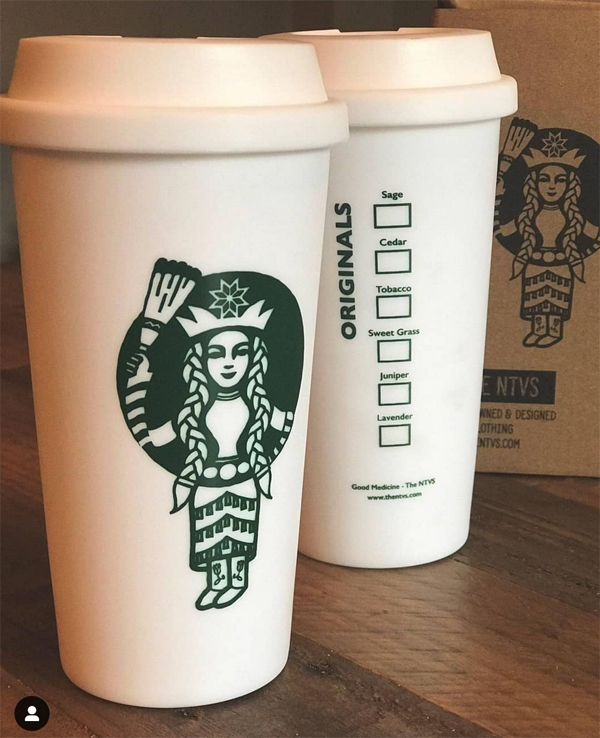
(images from @stevenpauljudd)
Given how the perspectives and missions of Judd and Meadows align so closely, an ongoing collaboration is no surprise. As Meadows remarks, “I feel like his art is a perfect fit for our brand because he takes everyday things like cartoons, television shows and movies we grew up watching, and indigenizes it. My boys love that poster I have hanging in their room because they identify with it. I feel like he always tries to create art that we can associate with and see ourselves in.” Prados Beauty approached Judd to create artwork for the packaging of a new eyeshadow palette in 2020. As Judd wanted the image to look modern and reflect the shades in the palette, he came up brightly colored, mosaic-like portraits of Pretty Nose and Stampede. I don’t know about you, but as soon as I laid eyes on them I had to look into their histories. Educating people through makeup and art absolutely works!
Pretty Nose was an Arapaho (some sources say Cheyenne) warrior chief who fought in the Battle of Little Bighorn in 1876. The Stampede portrait is based on a photo of a Dakota chief taken around 1900. Sadly there was not much more readily available information on either.
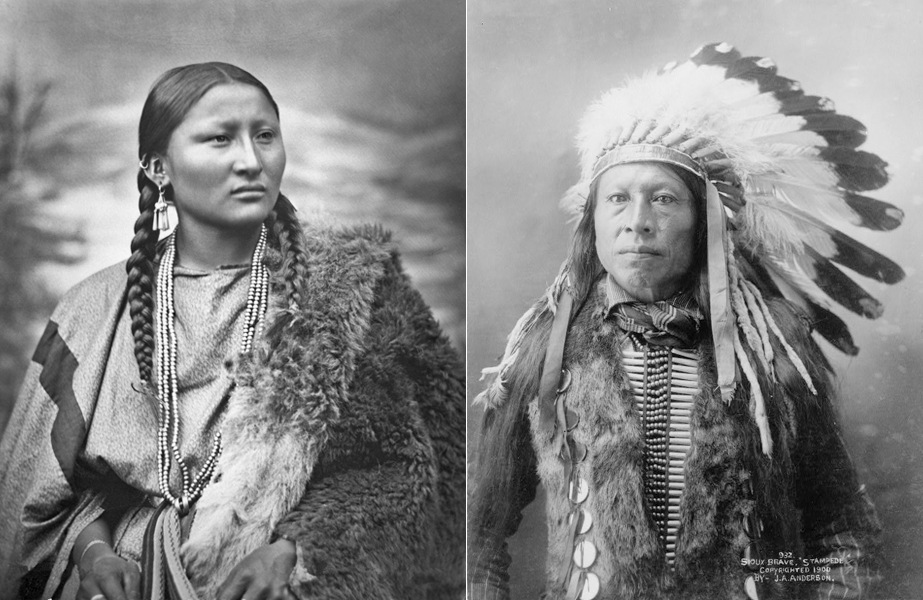 (images from whitewolfpack.com and loc.gov)
(images from whitewolfpack.com and loc.gov)
The style is reminiscent of a work he created a little later for a display outside the Arthur Ashe Stadium at the 2021 U.S. Open. Judd explains the inspiration for the piece. “When most people think of Native Americans, they think of them as a monolith. But there are over 500 different tribes in the US alone. Each with their own unique culture. From their music and food to their songs and language. I wanted to do a mosaic, each beautiful color representing the many different tribes across the land.”
Once again, Judd’s vision lines up with that of Prados Beauty. A colorful mosaic is a way of bringing all the tribes together while recognizing their individuality. Says Meadows, “When I think of Indigenous beauty, I think of amplifying the voices of not just one particular tribe but all of us together. Using vibrant seeds of color like turquoise and yellow and orange helps accomplish that.”
Just last week, Prados released their new collection entitled Matriarch. According to the website: “For this collection we wanted to put together something beautiful, colorful and powerful! We wanted to honor all the matriarchs in our lives by showing up and showing out!” It’s a great theme as many Native American tribes were matriarchal and matrilineal.
I must disclose that I received the entire Matriarch PR box by mistake. It was meant to go a media contact, but somehow ended up at Museum headquarters. I was really looking forward to receiving what I had actually ordered, which was the Steven Paul Judd 2.0 palette, highlighter and collector’s box, so you can imagine my shock when I opened the package to see roughly triple the products I had ordered, with beautiful images on the packaging I didn’t recognize. I emailed customer service and offered to send it back (even though I didn’t want to, LOL), and within a few hours I received a reply from Cece Meadows herself! She generously allowed me to hang onto the whole box of goodies and, per the included instructions, requested that I not reveal anything until the collection officially dropped. It was all very exciting, for a second I felt like an influencer! I was absolutely flabbergasted that the Museum could keep everything. Plus, my original order arrived a day or two later.
The collection includes an eyeshadow palette, three face palettes, 5 lipsticks, an eyeliner and eyelash glue, two sets of false eyelashes, and a cute little LED mirror.
The imagery Judd created for the packaging for the Matriarch lineup is more varied than the previous collection. As a collector, I appreciate that different images were used on different products.
Aren’t these lipsticks delicious looking? Love the hot pink cases too. Another great thing about Prados is that a whopping 50% (yes, you read that correctly) of profits go to Indigenous communities and people in need, including veterans, single parents, and children with special needs. “Both personally and professionally, I remember every disappointment when I just needed support to get me through tough situations. So I always promised myself during my prayer times that if I ever found myself in a position where I could live comfortably and my family was taken care of, I was going to help people — especially right now during the pandemic. I have raised over $20K to purchase PPE for Native American communities all over the US, Mexico and Canada…In addition, we buy kids shoes for back-to-school season, clothes, jackets and school supplies. We pay rent for single moms, college tuition and living expenses. We even threw a baby shower last year,” says Meadows. She also recently launched the Prados Life Foundation to help facilitate donations.
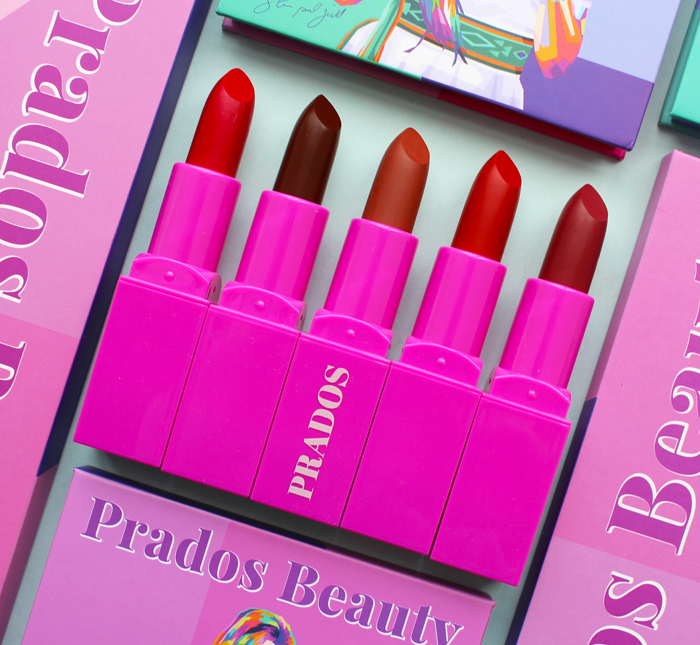
I’m really enjoying Prados, and I’m not just saying that because they accidentally sent me an amazing PR box and allowed the Museum to hang onto it. After reading more about Meadows and her mission, this is definitely a company you can feel good about buying from, with gorgeous and inspired packaging to boot. I also love Judd’s work as it provides food for thought without being preachy, and well, you know how I much I adore fresh takes on traditional pop culture. If he referenced some ’90s TV shows or movies I would lose my mind. Finally, I can’t think of a better collaboration between a brand and an artist – these two were a match made in heaven. As someone who researches makeup and grew up on a steady diet of mainstream American TV/movies/etc., I can think of only a handful of Indigenous makeup brands, makeup artists, influencers and models, and the scarce portrayals of Indigenous people in pop culture were largely either stereotypes or downright racist.2 There is a dire need to make space for and raise the visibility of Native American and other Indigenous cultures, and both Meadows and Judd are doing a tremendous job helping to fill that void through their respective crafts.
What do you think?
1 While sometimes used this way, Indigenous is not totally interchangeable with Native American. Indigenous refers to those populations living together prior to European colonization. These populations exist outside the United States and on every continent, therefore, while Native Americans are Indigenous, not all Indigenous people are Native American. Check out this site for more information.
2A personal anecdote. The district in Pennsyltucky (excuse me, Pennsylvania) where I attended junior high and high school was named for a local Native American tribe that presumably white people had wiped out. The school’s mascot shares its name with a certain Washington football team. As a teenager it finally dawned on me just how awful it was, but any time I brought it up I was told that it wasn’t offensive in the slightest and that I was being “oversensitive”. As far as I know my former high school STILL thinks it’s okay to use it. Thank goodness for Meadows, Judd and shows like Reservation Dogs. It’s from the same brilliant people who brought us the hilarious What We Do in the Shadows, so definitely check it out.



